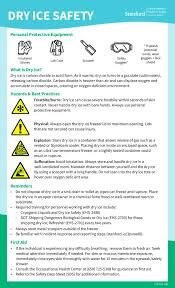Dry Ice Dangers: What You Need to Know to Use It Safely
Introduction
Dry ice, the solid form of carbon dioxide (CO₂), is celebrated for its cooling and fog-producing effects. Its ability to transition directly from a solid to a gas makes it a fascinating and useful material for various applications, from preserving perishables to creating stunning visual effects. However, dry ice also poses several safety risks that must be managed to prevent accidents and injuries. This article explores the dangers associated with Dry ice safety and provides essential tips for using it safely.
Understanding Dry Ice
1. What Is Dry Ice?
Dry ice is the solid form of carbon dioxide, which sublimates (transitions from solid to gas) at temperatures above -78.5°C (-109.3°F). It is widely used in scientific experiments, entertainment, and industrial processes due to its unique properties.
2. Potential Dangers
Despite its utility, dry ice poses specific risks due to its extremely low temperature and the nature of CO₂ gas. Understanding these dangers is crucial for safe handling and usage.
Key Dangers of Dry Ice
1. Frostbite and Burns
- Extreme Cold: Dry ice is extremely cold, with a temperature of about -78.5°C (-109.3°F). Direct contact with dry ice can cause severe frostbite or cold burns, similar to burns from extreme heat.
- Protective Measures: Always handle dry ice with insulated gloves or tongs. Avoid direct skin contact to prevent injuries.
2. CO₂ Gas Hazards
- Suffocation Risk: As dry ice sublimates, it releases CO₂ gas. In confined or poorly ventilated spaces, this gas can displace oxygen, leading to a risk of suffocation. Symptoms of CO₂ buildup include dizziness, shortness of breath, and headaches.
- Ventilation: Ensure that dry ice is used or stored in well-ventilated areas to allow CO₂ gas to dissipate safely. Avoid using dry ice in small, enclosed spaces.
3. Pressure Build-Up
- Container Risks: If dry ice is stored in an airtight container, the pressure from the sublimated gas can cause the container to burst. This can lead to explosions or shrapnel injuries.
- Proper Storage: Use containers designed to vent CO₂ gas safely. Do not seal dry ice in airtight containers.
4. Handling and Transportation Risks
- Accidents and Spills: Dropping or mishandling dry ice can cause it to break into smaller pieces, increasing the risk of frostbite and creating a mess.
- Safe Handling: Use tools like tongs or scoops for handling dry ice, and transport it in well-ventilated containers to prevent accidents.
Best Practices for Safe Use
1. Use Protective Gear
- Insulated Gloves: Always wear insulated gloves or use tongs when handling dry ice to protect your skin from extreme cold.
- Eye Protection: Consider wearing safety goggles to protect your eyes from any potential splashes or pieces of dry ice.
2. Ensure Proper Ventilation
- Ventilated Areas: Use dry ice in well-ventilated spaces to prevent CO₂ gas from accumulating and displacing oxygen. Open windows or use fans to improve airflow.
- Avoid Confined Spaces: Do not use dry ice in small or enclosed areas where CO₂ gas can build up.
3. Storage and Disposal
- Correct Containers: Store dry ice in insulated containers that allow gas to escape. Avoid using airtight containers to prevent pressure buildup.
- Safe Disposal: Allow dry ice to sublimate in a well-ventilated area. Do not dispose of dry ice in sinks, toilets, or other plumbing fixtures to avoid damage or blockages.
4. Emergency Preparedness
- First Aid Knowledge: Be familiar with first aid procedures for treating frostbite and CO₂ exposure. Know how to treat frostbite by gently warming the affected area and seek medical attention if necessary.
- Emergency Contacts: Keep emergency contact information accessible and ensure that everyone involved knows what to do in case of an accident or exposure.
Conclusion
While dry ice is a versatile and effective material, it comes with specific dangers that must be managed with care. By understanding the risks associated with dry ice—such as frostbite, CO₂ gas hazards, and pressure buildup—you can take the necessary precautions to use it safely. Proper handling, ventilation, and storage are key to preventing accidents and ensuring a safe experience with dry ice. Educating yourself and others about these safety measures will help you enjoy the benefits of dry ice while minimizing risks.

